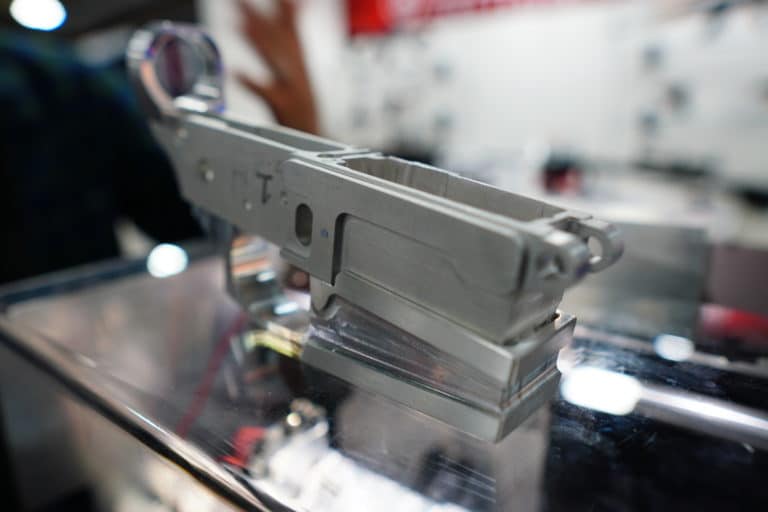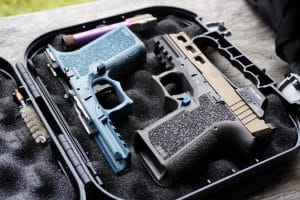A federal judge just opened a new front in the post-Bruen judicial war over the nation’s gun laws.
Last Friday, Judge George H. Wu upheld California’s attempt to ban possessing unserialized homemade guns and the tools to make them. The reasoning behind the ruling is more interesting than the outcome of the case. Wu found the conduct in question was simply not covered by the plain text of the Second Amendment.
He determined that since the Second Amendment only explicitly mentions the right to “keep and bear” arms, making them (and, presumably, selling or buying or shooting or cleaning or modifying or what have you) is not covered. Therefore, boom, no need to examine whether the regulation has any historical analogue as required under Bruen. No need to look any further.
“Though it leads with a recognition of the primacy of Bruen’s ‘plain text’ point, DD seeks in its opening brief to jump ahead in the analysis to a historical/tradition assessment (and to jump ahead in Bruen to that decision’s discussion of how to conduct such an assessment),” Judge Wu wrote in his ruling rejecting a request for a preliminary injunction against the law. “But it has effectively attempted to avoid the necessary threshold consideration – does the ‘Second Amendment’s plain text’ cover the issue here? No, it plainly does not. AB 1621 has nothing to do with ‘keep[ing]’ or ‘bear[ing]’ arms.”
It’s like a “one weird trick that plaintiffs hate” theory of Bruen.
Of course, there are several shortcomings to this approach. In this particular case, the California law clearly does directly implicate the “keeping” of arms, as the plaintiffs in the case have noted. It defines “precursor” firearms parts as firearms and then bans their possession unless they are serialized and registered. So, the law would seem to demand a historical analysis even under Wu’s logic.
Regardless, the argument that the Second Amendment only protects the literal owning and carrying of guns doesn’t seem like a winner. The idea the Founders intended to let people own firearms and carry them around but not make, sell, buy, or, heck, even shoot them seems too far-fetched to catch on among federal judges.
Other federal courts have repeatedly rejected this basic idea. U.S. District Court Judge Maryellen Noreika blocked a similar Deleware “ghost gun” ban earlier this year under the Bruen standard.
“These statutes burden constitutionally protected conduct because possession of firearms and firearm frames and receivers is within the scope of the Second Amendment’s right to ‘keep and bear Arms’ and Defendant has not shown that these firearms and components are not commonly owned by law-abiding citizens for lawful purposes,” Judge Noreika wrote in her opinion. “Further, Defendant has offered no evidence that these statutes are consistent with the nation’s history of firearm regulation.”
And even before the Supreme Court handed down Bruen, federal judges in Illinois and Pennsylvania ruled the Second Amendment protects shooting ranges.
“The two zoning regulations—the manufacturing-district classification and the distancing rule—dramatically limit the ability to site a shooting range within city limits,” the Seventh Circuit Court of Appeals ruled in 2017’s Ezell v. City of Chicago. “Under the combined effect of these two regulations, only 2.2% of the city’s total acreage is even theoretically available, and the commercial viability of any of these parcels is questionable—so much so that no shooting range yet exists. This severely limits Chicagoans’ Second Amendment right to maintain proficiency in firearm use via target practice at a range.”
However, that doesn’t mean this line of reasoning can’t become influential. There is less likely to be major contention over areas most directly connected to keeping and bearing arms, such as making or selling them. But the scope of Second Amendment protections, especially at the edges, will be an ongoing fight, and the Supreme Court may be hesitant to get directly involved in all of those battles.
Eric Ruben, a law professor at Southern Methodist University who has written extensively on Second Amendment litigation, outlined how Wu’s approach might be applied down the line–even if his ruling doesn’t stand for long.
“I could imagine a sliding scale, like the more regulated conduct is textually covered, the higher the govt’s burden to put forward a regulatory tradition,” he tweeted.
There’s also a practical concern for gun-rights activists who might run up against a judge who attempts to short-circuit Bruen analysis this way. While several federal judges have bucked the traditional partisan markers to rule against restrictions under Bruen, such as Democrat-appointed judges blocking local Colorado “assault weapons bans,” you’re likely to find exceedingly skeptical judges in more liberal federal circuits.
Cody Wilson, founder of plaintiff Defense Distributed, said that’s his biggest concern about what comes next in his case after Wu’s ruling.
“You know what’s gonna happen,” he said. “I’ll notice the appeal, and I’ll get three Democrats on a Ninth Circuit panel. My concern here, and the reason I’m so hot about this, is it’s like, ‘alright, we’re just gonna make Bruen an even narrower test than we created under Heller.'”
Frankly, that’s entirely possible in a circuit that has never struck down a gun regulation. The Supreme Court did take 12 years to follow up its decisions in Heller and McDonald with Bruen despite ample opportunities to intervene well before then. So, some lower court judges may be willing to risk handing down rulings they know likely conflict with what the Supreme Court wants.
But that’s probably not a good bet anymore. After all, Bruen itself was largely a rebuke of how lower courts chose to minimize the impact of Heller. The Court’s makeup has also changed significantly since it last rejected a collection of gun cases. In the year before Bruen, it took a different gun case out of New York. And it has already granted, vacated, and remanded five other gun cases since it decided Bruen.
There is no longer a good reason to think the Supreme Court will allow its new standard of review for gun cases to simply be sidestepped with one weird trick.







3 Responses
The 1st Amendment says “Congress shall make no law…” but that wouldn’t stop the government from prohibiting churches, since the text doesn’t say anything about churches. It wouldn’t stop the government from shutting down Fox News since they don’t “Press”: anything. It wouldn’t stop the government from prohibiting chat rooms, Facebook, or any other virtual meetings since people are not “assembled” in person.
And, it doesn’t say anything about Executive Orders, which can be executed without Congress passing a law.
What a ridiculous ruling.
Yea, exactly. I think it’s pretty thin reasoning that’s designed to try and just ignore Bruen while pretending it’s fulfilling it.
They could donate directly to a candidate, but there are caps on how much you can donate. That’s why rich donors tend to give to a variety of groups and use super pacs instead.